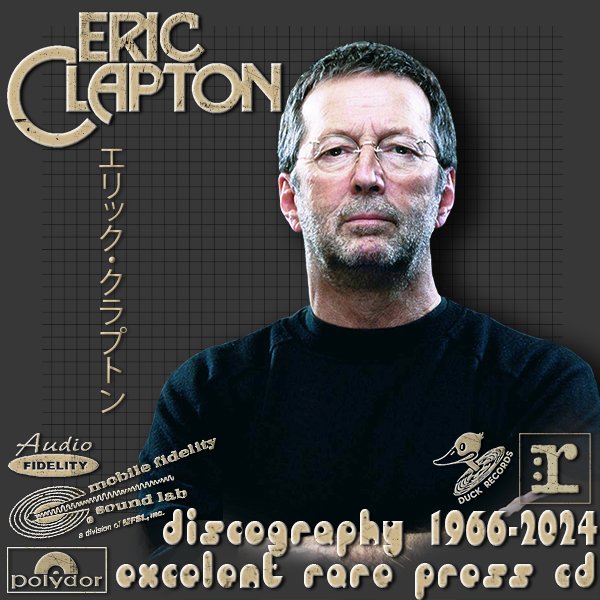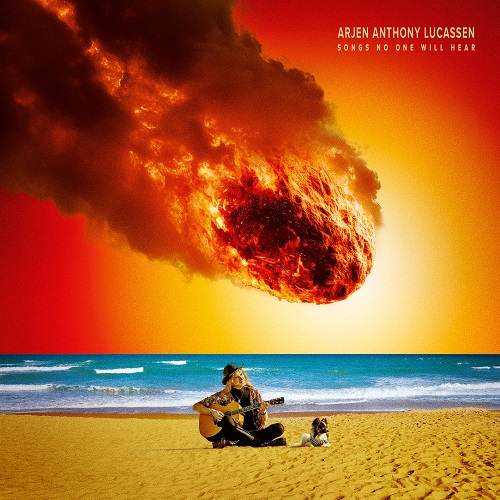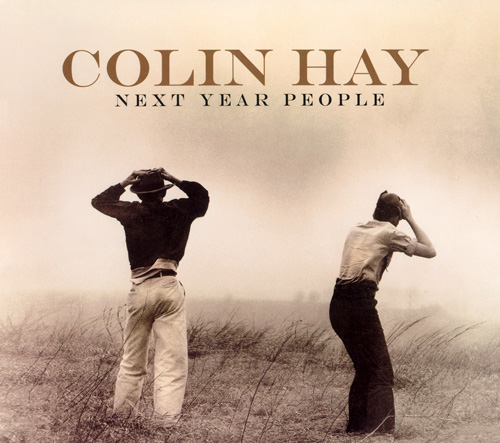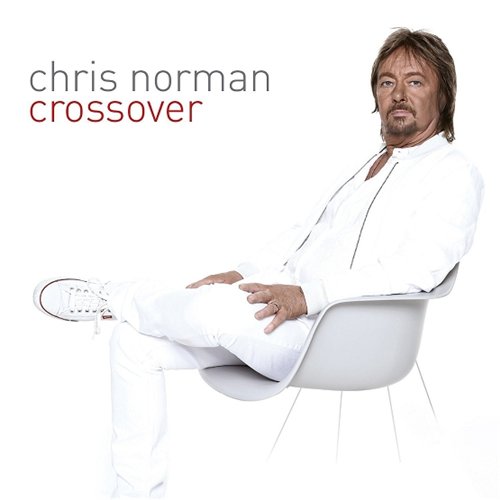Devon Allman - The Blues Summit (2025)
Artist: Devon Allman Title Of Album: The Blues Summit Year Of Release: 2025 Label (Catalog#) :Ruf Records [Ruf 1328 ] Country:: USA Genre: Blues Rock Quality: FLAC (*image + .cue,log) Bitrate: Lossless Time: 45:28 Full Size: 333Mb(+3%)(covers,png) Info: wiki Upload: xfile.cloud

Devon Allman - The Blues Summit (2025)
Artist: Devon Allman Title Of Album: The Blues Summit Year Of Release: 2025 Label (Catalog#) :Ruf Records [Ruf 1328 ] Country:: USA Genre: Blues Rock Quality: FLAC (*image + .cue,log) Bitrate: Lossless Time: 45:28 Full Size: 333Mb(+3%)(covers,png) Info: wiki Upload: xfile.cloud
14 09, 2025
ERIC CLAPTON «Discography» (60 × CD · First Press + 24KT Gold CD · 1966-2024)
Performer: ERIC CLAPTON / エリック・クラプトン Album / collection: «Discography / ディスコグラフィー» +++ Label: (c)(p) 1966-2024 Duck ⁄ Reprise ⁄ MFSL ⁄ Audio Fidelity ⁄ WEA International Inc. Source: Rip by KoGGaN™ scans by inet… Official DR value: •10•10•11•10•12•11•11•11•11/11•15•13/9•13•13• •13•12•14•14•14•14•13/12•13•15•13•14•12/12•14•13•14•13•14•11• •13•10•12•8•8/12•12•13•7•7•7•7•11•9•8•8/8/8•8/8/8•11•8•11•10• Catalog (Barcode): much… Genre / Style: Rock, Classic Rock, Blues Rock, Southern Rock, Acoustic

ERIC CLAPTON «Discography» (60 × CD · First Press + 24KT Gold CD · 1966-2024)
Performer: ERIC CLAPTON / エリック・クラプトン Album / collection: «Discography / ディスコグラフィー» +++ Label: (c)(p) 1966-2024 Duck ⁄ Reprise ⁄ MFSL ⁄ Audio Fidelity ⁄ WEA International Inc. Source: Rip by KoGGaN™ scans by inet… Official DR value: •10•10•11•10•12•11•11•11•11/11•15•13/9•13•13• •13•12•14•14•14•14•13/12•13•15•13•14•12/12•14•13•14•13•14•11• •13•10•12•8•8/12•12•13•7•7•7•7•11•9•8•8/8/8•8/8/8•11•8•11•10• Catalog (Barcode): much… Genre / Style: Rock, Classic Rock, Blues Rock, Southern Rock, Acoustic
14 09, 2025
Arjen Anthony Lucassen - Songs No One Will Hear (No Narration) 2025
Исполнитель: Arjen Anthony Lucassen Альбом: Songs No One Will Hear (No Narration) Жанр: Progressive Rock Год: 2025 Страна: Netherlands (Hilversum, North Holland) Лейбл: InsideOutMusic Формат: FLAC (tracks) Official DR value: DR8 Разрядность: 24bit / 48kHz Stereo Размер: 570 MB Инфо: progarchives Залито на: XFile (3% восстановление) «Exclusive for Lossless-Galaxy»

Arjen Anthony Lucassen - Songs No One Will Hear (No Narration) 2025
Исполнитель: Arjen Anthony Lucassen Альбом: Songs No One Will Hear (No Narration) Жанр: Progressive Rock Год: 2025 Страна: Netherlands (Hilversum, North Holland) Лейбл: InsideOutMusic Формат: FLAC (tracks) Official DR value: DR8 Разрядность: 24bit / 48kHz Stereo Размер: 570 MB Инфо: progarchives Залито на: XFile (3% восстановление) «Exclusive for Lossless-Galaxy»
13 09, 2025
Жанры
Lossless Galaxy Release
Русская музыка
--Поп
--Рок
--Панк
--Альтернатива
--Металл
--Рэп, Хип-Хоп, R'n'B
--Джаз и Блюз
--Фолк
--Шансон, Авторская песня
--СССР
Зарубежная музыка
--Pop
--Rock
--Hard Rock
--Progressive & Art-Rock
--Pop-Rock & Soft Rock
--Instrumental Rock
--Heavy, Traditional, Industrial Metal
--Power, Gothic, Sympho Metal
--Thrash, Speed, Groove, Modern Metal
--Death, Melodic Death, Doom, Dark Metal
--Black, Pagan, Folk, Viking Metal
--Alternative
--Punk
--Disco, Eurodance
--Rap, Hip Hop, R'n'B
--Reggae, Ska, Dub
--Jazz, Blues, Soul
--Folk, Country, Ethnic
--Electronic, Ambient, New Wave
--House, Techno, Trance
Другие жанры
--New Age, Relax, Meditative & Flamenco
--Chillout, Lounge, Downtempo, Trip-Hop
--Drum & Bass, Jungle, Breakbeat, IDM
--Classical / Классическая музыка
--Soundtrack
--Музыкальные сказки
Vinyl Rip
HI-Res / DVD-Audio / DTS
--SACD
--DSD
--DVD-Audio
Сборники Lossless-Galaxy
Альбомы 2022
Альбомы 2023
Альбомы 2024
Теги
1st Press 2022 2023 2024 2025 70... AOR Black Metal Blues Blues Rock Bootleg Series Classic Rock Death Metal Discography Exclusive for Lossless-Galaxy Folk Rock Fusion Hard Rock Heavy Metal Hi-Res Japanese Edition Jazz Jazz Rock lossless Melodic Death Metal Melodic Rock Modern Electric Blues Pop Pop Rock Power Metal Prog Rock Progressive Metal Progressive Rock Psych Rock Psychedelic Rock Rock SACD Symphonic Metal Thrash Metal Дискографии от KoGGaN
Архивы
Опрос
В каком формате хотели бы видеть релизы на сайте ?
 Автор: ssrocker, 31 октября 2015, Комментариев: 0, Просмотров: 1 972
Автор: ssrocker, 31 октября 2015, Комментариев: 0, Просмотров: 1 972Natalie Imbruglia - Male (2015)
 Автор: sevasval, 30 октября 2015, Комментариев: 0, Просмотров: 1 134
Автор: sevasval, 30 октября 2015, Комментариев: 0, Просмотров: 1 134Nino Ferrer - Les 8 Premieres Chansons (1964) [Barclay 2001]
 Автор: ssrocker, 29 октября 2015, Комментариев: 0, Просмотров: 976
Автор: ssrocker, 29 октября 2015, Комментариев: 0, Просмотров: 976Colin Hay - Next Year People (2015)
 Автор: swint68, 22 октября 2015, Комментариев: 1, Просмотров: 1 348
Автор: swint68, 22 октября 2015, Комментариев: 1, Просмотров: 1 348The Ting Tings - We Started Nothing [Japanese Edition] (2008)
![The Ting Tings - We Started Nothing [Japanese Edition] (2008) The Ting Tings - We Started Nothing [Japanese Edition] (2008)](/uploads/posts/2015-10/1445484691_the-ting-tings-we-started.jpg)
Исполнитель: The Ting Tings
Страна: UK
Альбом: We Started Nothing [Japanese Edition]
Жанр: Indie Rock / Pop Rock
Издатель: Sony Music Japan International Inc. [SICP 1871]
Год: 2008
Формат: APE (*image + .cue,log, covers)
Размер: 407Mb
Залито: Depositfiles / Turbobit (3% на восстановление)
"The Ting Tings" — британский инди-дуэт , образовавшийся в 2006 году. Третий сингл группы "That's Not My Name" дебютировал сразу на первом месте британского хит-парада 18 мая 2008 года. Также мгновенным чарттоппером стал дебютный альбом "We Started Nothing", выпущенный 19 мая 2008 года.
Страна: UK
Альбом: We Started Nothing [Japanese Edition]
Жанр: Indie Rock / Pop Rock
Издатель: Sony Music Japan International Inc. [SICP 1871]
Год: 2008
Формат: APE (*image + .cue,log, covers)
Размер: 407Mb
Залито: Depositfiles / Turbobit (3% на восстановление)
"The Ting Tings" — британский инди-дуэт , образовавшийся в 2006 году. Третий сингл группы "That's Not My Name" дебютировал сразу на первом месте британского хит-парада 18 мая 2008 года. Также мгновенным чарттоппером стал дебютный альбом "We Started Nothing", выпущенный 19 мая 2008 года.
![The Ting Tings - We Started Nothing [Japanese Edition] (2008) The Ting Tings - We Started Nothing [Japanese Edition] (2008)](/uploads/1234269076_lossless-galaxy-2.gif)
Изменил: swint68
 Автор: ALLexxess, 16 октября 2015, Комментариев: 8, Просмотров: 4 152
Автор: ALLexxess, 16 октября 2015, Комментариев: 8, Просмотров: 4 152Paul McCartney: 1982 Tug Of War / 1983 Pipes Of Peace - 3CD/2CD + DVD Box Set Universal Music 2015
Paul McCartney: 1982 Tug Of War / 1983 Pipes Of Peace
3CD/2CD + DVD Box Set Universal Music 2015
3CD/2CD + DVD Box Set Universal Music 2015

Performer:
Paul McCartney
Box / Albums:
1982 Tug Of War
(3CD + DVD Box Set Universal Music 2015)
-------------------------
1983 Pipes Of Peace
(2CD + DVD Box Set Universal Music 2015)
Info:
Paul McCartney Archive Collection
MPL Communications Ltd. / Hear Music
Concord Music Group, Inc. / Universal Music Group
CD / DVD / Box Set / Remaster 2015
Catalog Box Sets / Numbered: HRM-37287-00 (№ 10564) / HRM-37291-00 (№ 07429)
Catalog All CDs/DVDs: HRM-37287-00 / HRM-37291-00
Manufactured in China
Dynamic Range: 10 • 13 • 12 / 12 • 13
Genre / Style: Rock / Pop Rock
Released Year: 2015
Format:
CDs: FLAC / Level 8 (img + *cue / *cue with ISRC + EAC log, AccurateRip)
Download: FLAC tracks 24/96 (24/44)
DVD: DVD Decrypter (ISO + *mds + DVDDecrypter log)
Covers: format PNG 300dpi, full scans
Size:
• • • • • • • • • • • • • • • • • • • • • • • • • • • • • • • •
Каждый альбом можно скачать отдельно
Each album can be downloaded separately
• • • • • • • • • • • • • • • • • • • • • • • • • • • • • • • •
Upload: RusFolder / Rapidgator
(5% recovery)
Paul McCartney
Box / Albums:
1982 Tug Of War
(3CD + DVD Box Set Universal Music 2015)
-------------------------
1983 Pipes Of Peace
(2CD + DVD Box Set Universal Music 2015)
Info:
Paul McCartney Archive Collection
MPL Communications Ltd. / Hear Music
Concord Music Group, Inc. / Universal Music Group
CD / DVD / Box Set / Remaster 2015
Catalog Box Sets / Numbered: HRM-37287-00 (№ 10564) / HRM-37291-00 (№ 07429)
Catalog All CDs/DVDs: HRM-37287-00 / HRM-37291-00
Manufactured in China
Dynamic Range: 10 • 13 • 12 / 12 • 13
Genre / Style: Rock / Pop Rock
Released Year: 2015
Format:
CDs: FLAC / Level 8 (img + *cue / *cue with ISRC + EAC log, AccurateRip)
Download: FLAC tracks 24/96 (24/44)
DVD: DVD Decrypter (ISO + *mds + DVDDecrypter log)
Covers: format PNG 300dpi, full scans
Size:
• • • • • • • • • • • • • • • • • • • • • • • • • • • • • • • •
Каждый альбом можно скачать отдельно
Each album can be downloaded separately
• • • • • • • • • • • • • • • • • • • • • • • • • • • • • • • •
Upload: RusFolder / Rapidgator
(5% recovery)

 Автор: ALLexxess, 8 октября 2015, Комментариев: 5, Просмотров: 3 158
Автор: ALLexxess, 8 октября 2015, Комментариев: 5, Просмотров: 3 158Creedence Clearwater Revival: 40th Anniversary Editions Box Set -
Creedence Clearwater Revival: 40th Anniversary Editions Box Set
7CD Box Set Fantasy Records 2009 / New Rip New Scans
7CD Box Set Fantasy Records 2009 / New Rip New Scans

Performer:
Creedence Clearwater Revival
Box / Albums:
2009 40th Anniversary Editions Box Set
1968 Creedence Clearwater Revival ● 1969 Bayou Country
1969 Green River ● 1969 Willy And The Poor Boys
1970 Cosmo's Factory ● 1970 Pendulum ● 1972 Mardi Gras
(7CD Box Set Fantasy Records)
Info:
Fantasy Records / Concord Music Group / Universal Distribution
Original Recording Remastered / Box Set / Vinyl Replicas
Catalog Box: 0888072315716
Catalog CDs:
0666999005022 • 0666999005039 • 0666999005046
0666999005053 • 0666999005060 • 0666999005077 • 0666999005084
Made in the EU
Dynamic Range: 8 / 9 / 9 / 9 / 8 / 9 / 15
Genre / Style: Rock / Country Rock / Blues Rock / Southern Rock / Classic Rock
Released Year: 2009
Format: FLAC / Level 8 (img + *cue / *cue with ISRC + EAC log, AccurateRip)
Covers: format PNG 600dpi/300dpi (booklets), full scans
Size:
• • • • • • • • • • • • • • • • • • • • • • • • • • • • • • • •
Каждый альбом можно скачать отдельно
Each album can be downloaded separately
• • • • • • • • • • • • • • • • • • • • • • • • • • • • • • • •
Upload: RusFolder / Rapidgator
(5% recovery)
Creedence Clearwater Revival
Box / Albums:
2009 40th Anniversary Editions Box Set
1968 Creedence Clearwater Revival ● 1969 Bayou Country
1969 Green River ● 1969 Willy And The Poor Boys
1970 Cosmo's Factory ● 1970 Pendulum ● 1972 Mardi Gras
(7CD Box Set Fantasy Records)
Info:
Fantasy Records / Concord Music Group / Universal Distribution
Original Recording Remastered / Box Set / Vinyl Replicas
Catalog Box: 0888072315716
Catalog CDs:
0666999005022 • 0666999005039 • 0666999005046
0666999005053 • 0666999005060 • 0666999005077 • 0666999005084
Made in the EU
Dynamic Range: 8 / 9 / 9 / 9 / 8 / 9 / 15
Genre / Style: Rock / Country Rock / Blues Rock / Southern Rock / Classic Rock
Released Year: 2009
Format: FLAC / Level 8 (img + *cue / *cue with ISRC + EAC log, AccurateRip)
Covers: format PNG 600dpi/300dpi (booklets), full scans
Size:
• • • • • • • • • • • • • • • • • • • • • • • • • • • • • • • •
Каждый альбом можно скачать отдельно
Each album can be downloaded separately
• • • • • • • • • • • • • • • • • • • • • • • • • • • • • • • •
Upload: RusFolder / Rapidgator
(5% recovery)

 Автор: ssrocker, 8 октября 2015, Комментариев: 0, Просмотров: 1 135
Автор: ssrocker, 8 октября 2015, Комментариев: 0, Просмотров: 1 135Rod Stewart - Every Picture Tells A Story [Mercury, Jap, LP (VinylRip 24/192)] (1971)
![Rod Stewart - Every Picture Tells A Story [Mercury, Jap, LP (VinylRip 24/192)] (1971) Rod Stewart - Every Picture Tells A Story [Mercury, Jap, LP (VinylRip 24/192)] (1971)](/uploads/posts/2015-10/1444305215_28332ca25e6a60dbaa4207c961e9a82e.jpg)
Artist: Rod Stewart
Title Of Album: Every Picture Tells A Story
Release Date: 1971/1974
Location: England
Label: Mercury – RJ-5154 [Jap]
Genre: Pop-Rock / Melodic Hard Rock
Quality: WavPack (image+.cue+covers) Vinylrip (24/192)
Length: 40:49 min
Tracks: 8
Total Size: 1.56 Gb (+3%)
WebSite: Home Page
Rip by alvaedis
 Автор: ssrocker, 7 октября 2015, Комментариев: 0, Просмотров: 1 047
Автор: ssrocker, 7 октября 2015, Комментариев: 0, Просмотров: 1 047Roxy Music - Flesh + Blood [Polydor, Jap, LP (VinylRip 32/192)] (1980)
 Автор: ssrocker, 6 октября 2015, Комментариев: 1, Просмотров: 1 118
Автор: ssrocker, 6 октября 2015, Комментариев: 1, Просмотров: 1 118Electric Light Orchestra - Time [Jet Records, Jap, LP (VinylRip 32/192)] (1981)
![Electric Light Orchestra - Time [Jet Records, Jap, LP (VinylRip 32/192)] (1981) Electric Light Orchestra - Time [Jet Records, Jap, LP (VinylRip 32/192)] (1981)](/uploads/posts/2015-10/1444079897_000.jpg)
Artist: Electric Light Orchestra (ELO)
Title Of Album: Time
Release Date: 1981
Location: England
Label: Jet Records – 25AP 2111 [Jap]
Genre: Symphonic / Progressive Rock / Pop-Rock / Art-Rock
Quality: WavPack (image+.cue+covers) Vinylrip (32/192)
Length: 44:07 min
Tracks: 13
Total Size: 2.17 Gb (+3%)
WebSite: Home Page
Rip by bruk67

![Nino Ferrer - Les 8 Premieres Chansons (1964) [Barclay 2001] Nino Ferrer - Les 8 Premieres Chansons (1964) [Barclay 2001]](/uploads/posts/2015-10/1446218844_front.jpg)

![Roxy Music - Flesh + Blood [Polydor, Jap, LP (VinylRip 32/192)] (1980) Roxy Music - Flesh + Blood [Polydor, Jap, LP (VinylRip 32/192)] (1980)](/uploads/posts/2015-10/1444168638_000.jpg)
